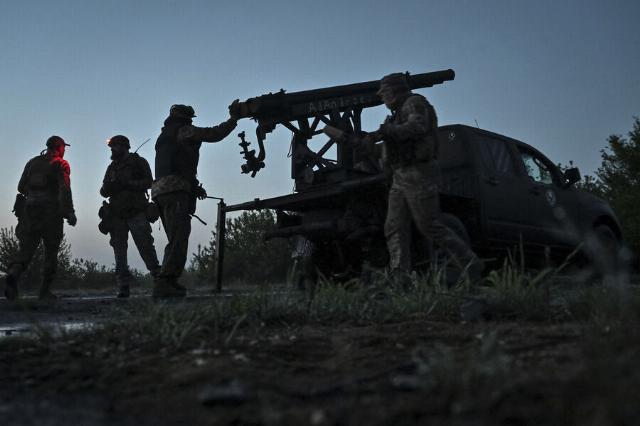US State Department: the situation of the Armed Forces of Ukraine at the front is incredibly desperate
Ukraine's allies recognized that due to delays in the supply of weapons, the situation of the Armed Forces of Ukraine on the battlefield turned out to be very difficult. The State Department calls what is happening at the front "incredibly desperate" and a critical moment. Against this background, The New York Times learned that NATO is getting closer to the decision to send military personnel to Ukraine - so far only to train Ukrainian soldiers.
Deputy representative of the US State Department Vedant Patel admitted during a briefing that in the current situation, the situation of the Armed Forces of Ukraine is "incredibly desperate." The broadcast was conducted on the department's YouTube channel .
"We know that this is a difficult time, but we are also confident that military assistance can lead to changes on the battlefield," Patel added.
Earlier, US Secretary of State Anthony Blinken also noted that Ukrainians have already "sacrificed a lot", but the coming weeks and months will require "a lot more" from them.
The head of the NATO military Committee, Admiral Rob Bauer, said that Kiev described the situation on the battlefield to the chiefs of the general staffs of the alliance countries.
"The situation remains serious, and delays in deliveries have played a significant role," Bauer said. The Admiral noted that Western countries have already sent the necessary weapons to Ukraine, they should be delivered in the near future. Bauer believes that the AFU still has a chance to win on the battlefield:
Bauer believes that both sides of the conflict are experiencing difficulties.
The commander-in-chief of the NATO Joint Armed Forces in Europe, General Christopher Cavoli, suggested that Ukraine would be able to hold the defense. According to him, the countries of the alliance do not believe that Russia has sufficient manpower and equipment to achieve success at the front.
"It is clear that they are moving south towards Kharkiv. They have a lot of reserves, they send a lot of weapons there," Cavoli added.
NATO instructors are preparing to leave
According to The New York Times, Western countries are getting closer to the decision to send their troops to Ukraine - so far only to train the Armed Forces. However, such a move could potentially involve the US and the EU in military action.
So far, Washington has refused, but General Charles K. Brown Jr., chairman of the Joint Chiefs of Staff, said that the deployment of NATO instructors seemed inevitable to him: "We will get to that in time."
"The shortage of personnel in Ukraine has reached a critical point, and the position of the Armed Forces on the battlefield has seriously deteriorated in recent weeks, as Russia accelerated its offensive, taking advantage of delays in the supply of American weapons. Ukrainian officials have asked their American and NATO counterparts to train 150,000 new troops," the article says.
"The transfer of the exercises to Ukraine would allow American instructors to collect information about innovations on the front line faster, which would allow them to adapt the training program faster," the article says.
The Americans are considering the possibility of training Ukrainian Armed Forces soldiers in Lviv, as the city is close to Poland, but they are afraid of attacks from Russia. Western officials claim that Ukrainian servicemen can still be sent to Poland or Germany for training, but this option is more difficult from a logistical point of view.
The NYT also writes that a small number of Americans are already in Ukraine helping to service Western weapons, such as Patriot air defense systems.
Pentagon Deputy Press Secretary Sabrina Singh told reporters during a briefing that she knew nothing about U.S. plans to send NATO instructors to Ukraine. At the same time, she confirmed that the Ukrainian military are being trained in the allied countries.
Alyona Fomina

